- 2 号 p. 29-
- 1 号 p. 1-
- |<
- <
- 1
- >
- >|
-
Kanji Watanabe, Hitoshi Watanabe, Yukiko Ogawa, Yukie Yoshida, Setsuko ...2005 年 4 巻 1 号 p. 1-9
発行日: 2005年
公開日: 2020/07/09
ジャーナル フリーThe objective of the present study was to estimate extremity muscle mass using a BI-based muscle mass analyzer and to investigate relationships of muscle mass to muscular strength system and cardiopulmonary functions. Subjects were 15 healthy adult men who did not exercise regularly (mean age, 19.5±1.4 years; height, 174.0±6.5 cm; weight, 65.1±7.4 kg). For estimation of body composition, including extremity muscle mass, a 12-lead BI muscle analyzer (Muscle-α, 50 kHz, 500, μA) was used. Maximum anaerobic power exhibited significant correlations to muscle mass of each body segment (r=0.549-0.854) and relative parameters such as extremity muscle mass/height ratio (r=0.539-0.853). Leg extension power exhibited significant correlations to muscle mass of the arm, thigh, leg and all extremities (r=0.518-0.700). Grip strength exhibited significant correlations to muscle mass of each body segment (r=0.719-0.865). Maximum oxygen uptake exhibited significant correlations to absolute mass of the thigh, lower leg and leg and relative parameters such as extremity muscle mass/height, upper arm muscle mass/upper arm length and lower leg muscle mass/lower leg length (r=0.564-0.840). In addition, maximum oxygen uptake relative to body weight exhibited significant correlations to leg muscle mass/arm muscle mass ratio and leg muscle mass/arm muscle mass relative to body weight (r=-0.598, p<0.05). Leg muscle mass/arm muscle mass ratio may thus represent a useful index related to maximum oxygen uptake. In this manner, when investigating relationships between body composition, muscular strength system and cardiopulmonary function, estimation of muscle mass and muscle mass balance can yield valuable information. Muscles are biological tissues that are affected by activities of daily living, but measuring muscle mass has not previously been easy. Now that muscle mass can be estimated using convenient techniques such as the BI method, relationships of muscle mass to physical fitness, motor abilities and activities of daily living can be readily assessed.
抄録全体を表示PDF形式でダウンロード (221K) -
Yuko Naito, Takaaki Matsumoto, Masuo Muro2005 年 4 巻 1 号 p. 11-18
発行日: 2005年
公開日: 2020/07/09
ジャーナル フリーThis study examined the relationship between heart rate(HR)recovery and change in salivary chromogranin A levels after physiologically severe stress(Borg’s scale : above 17)in active and hypoactive subjects. Fifteen(14 males, 1 female)physical education students participated and were divided into two groups based on their sport frequency. Saliva was collected before exercise, immediately after cycling exercise and following 2 min of recovery after exercise, and was analyzed commercially using solid phase enzyme immunoassay. Regression analysis of the initial phase of HR recovery showed that the active group exhibited a significantly steeper slope than the hypoactive group(p<0.05). Salivary chromogranin A concentration was significantly increased after cycling exercise compared with the level at rest(p<0.05), and the amount at 2 min after exercise had almost returned to the resting level. In particular, the magnitude of the increase after exercise tended to be greater in active than hypoactive subjects, however, there was no statically significant difference in salivary CgA output in both groups. Correlation was seen between the steeper slope of HR recovery and the change percent of salivary chromogranin A output decrement for the first 2 min after exercise(p<0.05). These results suggested that salivary chromogranin A could be an indicator of short-term change in the activity of the cardiac autonomic nervous system, and that physical activity has a positive effect on post-exercise HR and the subsequent release of humoral components such as chromogranin A via alterations in the cardiac autonomic nervous system.
抄録全体を表示PDF形式でダウンロード (237K)
-
Katsuo Fujiwara, Kenji Kunita, Hitoshi Watanabe, Takeo Kiyota, Kaoru M ...2005 年 4 巻 1 号 p. 19-25
発行日: 2005年
公開日: 2020/07/09
ジャーナル フリーWe investigated the effect of sports experience on shortening of the saccadic reaction time associated with the activity of neck extensor muscles. Saccadic reaction time was measured in the 20°neck flexion position(neck flexion)and under 30% muscle contraction of the shoulder girdle elevators(30% contraction)in three groups. These included an untrained group that has never belonged to any sports club(UT group), a group that has belonged to high-speed ball sports clubs(HS group), and a group with experience in other sports(OS group). In terms of neck flexion, significant shortening of the reaction time was observed for both the HS and OS groups. On the other hand, no significant shortening was observed for the UT group. In the 30% contraction, there was significant shortening of the reaction time for the HS group, while no significant shortening was observed for the OS and UT groups. Conversely, the reaction time of the UT group in the 30% contraction was significantly longer than that in the resting neck position. The shortening of the saccadic reaction time associated with the activity of neck extensors was observed for the subjects with sports experience, particularly for the subjects with experience pursuing a high-speed ball. The group difference in the shortening of the reaction time was markedly larger in the muscle contraction of the shoulder girdle elevators than in the neck flexion.
抄録全体を表示PDF形式でダウンロード (251K)
- |<
- <
- 1
- >
- >|